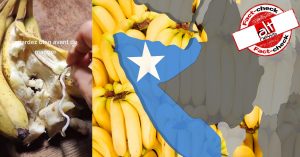An image of a page from a zoology book authored by Dr Ramesh Gupta is massively viral on social media. Several users have shared it claiming that the book speaks of a cure for COVID-19.
“#WHO you have not gone through the book of 12th standard written by Dr Ramesh Chand Gupta where he has mentioned about coronavirus so this is not a recent disease and he mentioned the cure too…who else is confused here #JantaCurfewMarch22 #pmoindia #NarendraModi #coronavirus,” reads a tweet by one Sunita Pradhan.
#WHO you have not gone through the book of 12th standard written by Dr Ramesh Chand Gupta where he has mentioned about coronavirus so this is not a recent disease and he mentioned the cure too…who else is confused here #JantaCurfewMarch22 #pmoindia #NarendraModi#coronavirus pic.twitter.com/WWA8HzuskX
— Sunita Pradhan (@SunitaP22163768) March 22, 2020
The same claim has also been promoted in Hindi – “Brother, the treatment for coronavirus was found with a lot of difficulties after searching for it in several books…the medicine is mentioned in zoology intermediate book…and this is not a new disease. भाइयों काफी किताबों में ढूंढने के बाद बड़ी मुश्किल से कोरोना वायरस की दवा मिली है…दवा इंटरमीडिएट की जन्तु विज्ञान की किताब में दी गई है…और यह कोई नई बीमारी नहीं है…”)
The book mentions coronavirus in the ‘common cold’ section. It says that there are several kinds of common cold, 75% of which are caused by rhinovirus or coronavirus. In the end, the excerpt lists medicines that can be used to treat the infection – aspirin, antihistamines and nasal spray.
As per Intermediate book of Jantu-science, written by Dr. Ramesh Gupta. Mentioned the medicine of #CoronaVirus on page 1072. We can help effective people by this.
Doctors are requested to analysis the medicine and advise.
Medicines are Aspirin, anti-histamines & Nasal spray. pic.twitter.com/kBhjG444kf
— kapil khatter (@102_khatter) March 22, 2020
CLAIM:
1. The novel coronavirus (nCoV) or COVID-19 is not a new disease.
2. The treatment for the disease has already been found.
3. Coronavirus can be cured with aspirin, antihistamines and nasal spray.
VERDICT:
False
FACT-CHECK:
All three claims raised on social media are false.
1. The novel coronavirus (nCoV) is a new strain of coronavirus.
The novel coronavirus is a new strain of the coronavirus family. It has unique characteristics and has never been discovered before.
“This #coronavirus is not SARS, it’s not MERS & it’s not influenza. It is a unique virus with unique characteristics.
Both #COVID19 & influenza cause respiratory disease & spread the same way, via small droplets of fluid from the nose & mouth of someone who is sick”-@DrTedros
— World Health Organization (WHO) (@WHO) March 3, 2020
Chinese health authorities say that nCoV is likely to have come from a seafood market in Wuhan where wildlife was also traded illegally. Chinese researchers said the virus could have spread from “an infected animal species to humans through illegally-trafficked pangolins”, which are prized in Asia for food and medicine. “Scientists have pointed to either bats or snakes as the source of the virus,” adds the report.
The novel coronavirus is a new variety of coronavirus. The World Health Organisation (WHO) states, “Coronaviruses (CoV) are a large family of viruses that cause illness ranging from the common cold to more severe diseases such a MERS-CoV and SARS-CoV.” A novel coronavirus (nCoV) and its outbreak COVID-19 has not been previously identified in humans. Its symptoms include fever, tiredness and dry cough. In most severe cases it causes shortness of breath, aches and pains, sore throat or in rare cases – diarrhoea, nausea or a runny nose.
According to the Centers for Disease Control and Prevention (CDC), human coronaviruses were first identified in the mid-1960s. “Sometimes coronaviruses that infect animals can evolve and make people sick and become a new human coronavirus. Three recent examples of this are 2019-nCoV, SARS-CoV, and MERS-CoV.”
SARS-CoV is Severe Acute respiratory syndrome which was identified in 2002. It is thought to be an animal virus from an “as-yet-uncertain animal reservoir, perhaps bats, that spread to other animals (civet cats) and first infected humans in the Guangdong province of southern China in 2002,” per WHO.
Middle East respiratory syndrome (MERS-CoV) is a viral respiratory disease caused by a coronavirus that was first identified in Saudi Arabia in 2012.
Therefore, while different strains of coronavirus have been discovered before, the novel coronavirus also knows as nCoV or SARS-CoV-2 is new.
2. There is no cure for novel coronavirus yet.
“There is no vaccine and no specific antiviral medicine to prevent or treat COVID-2019,” states WHO. In fact, no vaccine has yet been found even for SARS-CoV and MERS-CoV.
It usually takes 10 to 15 years to develop a new vaccine however, technological advancement has sped up the process. Recently, US president Donald Trump touted Chloroquine and Hydroxychloroquine as possible treatments for coronavirus following which the US Food and Drug Administration (FDA) approved clinical trials of Chloroquine. However, an Arizona man with nCoV died in an apparent attempt to self-medicate with Chloroquine. His wife is in critical condition.
According to a Forbes Tracker, several drug companies, universities and biotech start-ups are researching treatment and cures for the disease. All medications are either in early stages of development or animal and human testing.
3. Coronavirus cannot be ‘cured’ with aspirin, antihistamines and nasal spray.
When any of the coronaviruses (or rhinoviruses for that matter) cause the common cold, the physicians’ aim is to (a) stop the transmission of the infection to other people and (b) treat the symptoms. This is because the common cold is a self-limited disease – it cures by itself. It is for this reason, antivirals or antibiotics are not given for a common cold. In the usual clinical picture, it is also not required to find out which organism has caused the common cold since it has no bearing on its treatment. The mainstay of symptomatic treatment for the common cold is anti-inflammatory drugs like NSAIDs (aspirin is one of them), antihistamines, anticholinergic drugs and decongestants (which can be given as nasal spray). All of these can be bought at pharmaceutical stores without a doctor’s prescription.
However, when coronaviruses like SARS, MERS and the novel coronavirus (COVID-19) cause severe disease with manifestations like pneumonia, acute respiratory distress syndrome, septic shock, the treatment involves intensive care and not over-the-counter medications.
Therefore, it is inappropriate to extrapolate the treatment for the common cold as the treatment of all coronavirus infections.
The textbook itself mentions inexact and inappropriate treatment. “Nasal spray” only implies the route through which the medicine is given – through the nose. There are many drugs given through the nasal route, decongestants for the common cold are only one of them.
CONCLUSION
Thus an excerpt from a zoology textbook covering the basics of the common cold was taken out of context. The claims made rest on the misconception that there is only one coronavirus and that coronavirus only causes the common cold. In fact, there are many coronaviruses that infect different animals. Of those, from the mid-1960s till date, seven coronaviruses have been shown to infect humans including SARS, MERS and the novel COVID-19. These viruses cause a wide range of illnesses from common cold to acute respiratory distress syndrome. Hence these viral tweets are misleading people on the treatment available for coronavirus and fuel conspiracy theories that the current coronavirus pandemic is not new.
Note: The number of positive cases of the novel coronavirus in India has exceeded 600. This has caused the government to impose a complete restriction on movement apart from essential services. Globally, more than 4 lakh confirmed cases and over 19,000 deaths have been reported. There is a growing sense of panic among citizens, causing them to fall for a variety of online misinformation – misleading images and videos rousing fear or medical misinformation promoting pseudoscience and invalid treatments. While your intentions may be pure, misinformation, spread especially during a global pandemic, can take lives. We request our readers to practice caution and not forward unverified messages on WhatsApp and other social media platforms.
Independent journalism that speaks truth to power and is free of corporate and political control is possible only when people start contributing towards the same. Please consider donating towards this endeavour to fight fake news and misinformation.




